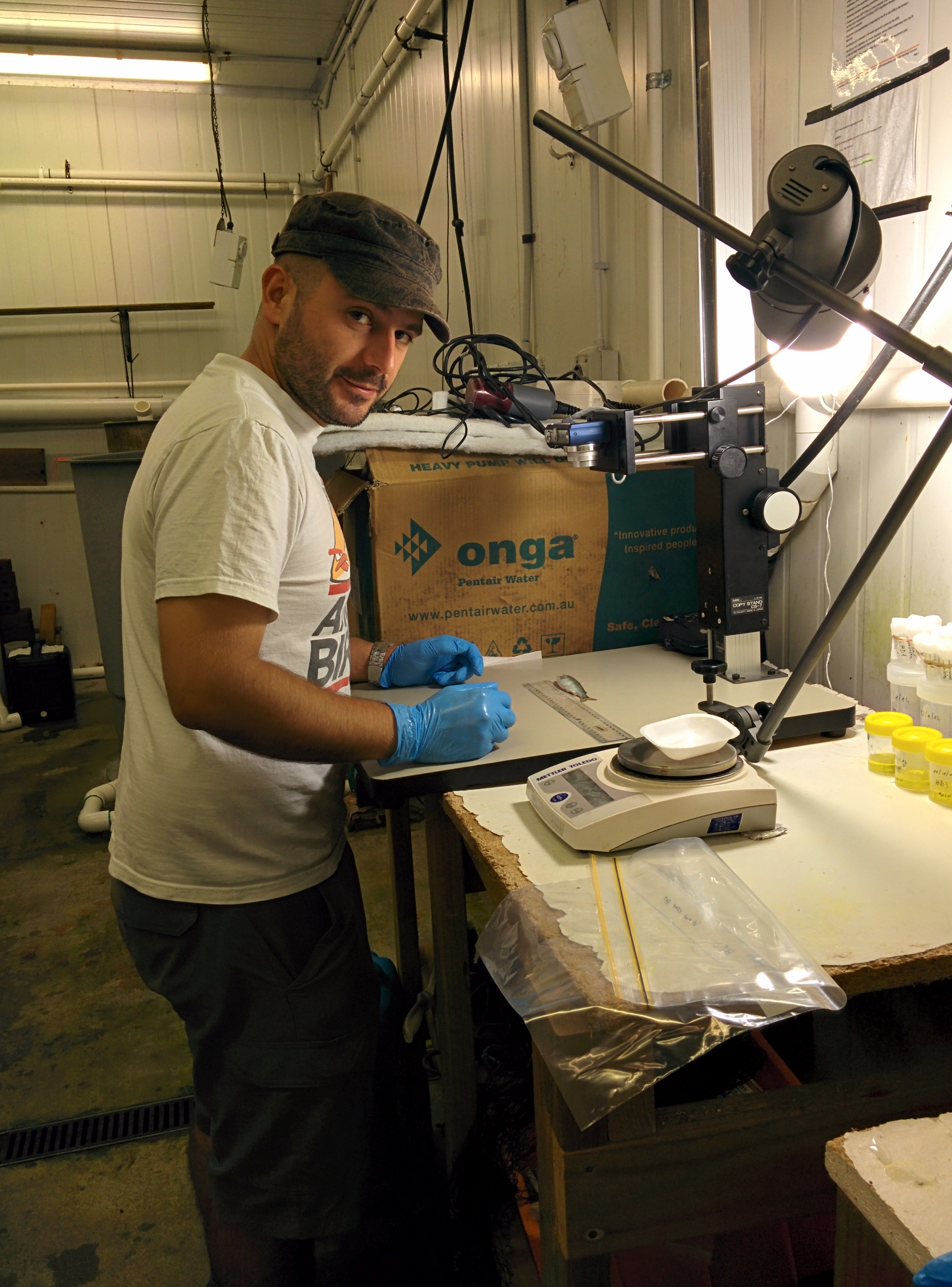
New IMAS research into the impact of jaw deformities on Tasmania's salmon aquaculture industry has found that dramatic lower jaw structural changes in triploid Atlantic salmon occur during the parr/presmolt phase.
The deformities took place in a relatively short time, implying a possible effect of high growth rate.
The study, recently published in Journal of Fish Diseases with IMAS PhD candidate Gianluca Amoroso (pictured) as lead author, also identified the concurrence of different types of jaw deformities.
Using the aquaculture facilities at IMAS' Taroona campus, researchers observed two groups of salmon, one displaying normal jaws, and the other group with an already deformed lower jaw, in order to better understand if various jaw deformities can concur and how jaw deformities impact the health of Tasmania's salmon populations.
The authors found that over three months several types of jaw deformities could occur independently and concurrently in both groups.
 The presence of jaw
deformities negatively impacted growth of fish affected and slowed down
recovery from opercular shortening, another condition impacting the bone near
the gills, frequently reported for Atlantic salmon.
The presence of jaw
deformities negatively impacted growth of fish affected and slowed down
recovery from opercular shortening, another condition impacting the bone near
the gills, frequently reported for Atlantic salmon.
These results have highlighted the peculiarity of triploids predisposition to developing jaw deformities and the possible impacts on general fish performance deriving from the condition/s.
The same researchers are currently investigating jaw deformities at molecular level, as little is known about their underlying mechanisms.
This study was carried out following the results of another recently published study in Journal of Fish Diseases by the same research group which tested the effect of triploidy and temperature on the prevalence of several skeletal deformities in diploid and triploid Atlantic salmon.
This ongoing research seeks to uncover more information about jaw deformities so the health, welfare, and sustainable production of the salmon population can be further improved.
The article "Concurrence of lower jaw skeletal anomalies in triploid Atlantic salmon (Salmo salar L.) and the effect on growth in freshwater." in Journal of Fish Diseases (2016), and by: G Amoroso, JM Cobcroft, MB Adams and C. Carter of IMAS, and T Ventura of the University of the Sunshine Coast is available here.